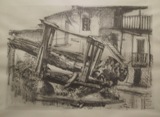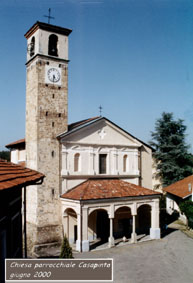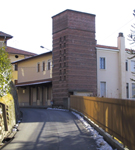|
DISTRICTS |
|
|
|
|
|
|
|
|
|
|
|
THE TOWN HALL'S HISTORY |
|
|
|
|
|
|
|
VARIED |
|
|
|
|
|
|
The MORTIGLIENGO and CASAPINTA |
The history
|
Literaly Mortigliengo means “Campo dei morti”, that is "dead's field". This comes from an historical event in 101 b.C., when the german population Cimbri, was completely destroyed by the roman army, led by the consul Caio Mario.
The Mortigliengo municipality was composed by five districts : Mezzana, the district in the middle, Strona, Crosa, Casapinta and Soprana, the district over. It stayed under the jurisdiction of the bishops of Vercelli till 1243, when it became part of Vercelli municipality; from 1351 to 1373 it was property of the Visconti's from Milan lordship.
In 1379 the Mortigliengo municipality became dominium of the Savoia and the bishop of Vercelli, who objected, was arrested in Biella. Then, in 1619, the Duke Emanuele I created the marquisate of Mortigliengo and Trivero; the marquisate had to be perpetual, but it lasted only a century, becoming a country in favour of Gian Giacomo Audiffredi from Turin.
Casapinta was one of the five villages of the municipality of the Mortigliengo and was called for the first time "Casapinta" when in 4 October 1606 the bishop went and visited the area “Casa-dipinta” (de domo picta, the painted house). In 1627 Casapinta became an independent township. Also after the autonomy Casapinta abided in the marquisate of Mortigliengo and Trivero that the Duke Carlo Emanuele I erected in favour of Giovanni Wilcardel.
|
Although the incorporation in an independent township for almost 200 years, Casapinta hadn't a guildhall, till 1820 when the preassemblies took place in the manse and the archive was warded in sacresty. In the same year, it was decided to give a new head office to the city hall (were built two rooms), one for the preassemblies and the other for the archive, extracted from an arcade (which was already property of the township), in the canton Nicola in order not to disturb the priest.
But the locals, although the readiness of the inhabitants, were too small.
In 1851 they decided to build, in the middle of the town, the guildhall, but the project was realised only in 1874/75.
The 5th February 1960 the City Council, guarded by Mayor Guano Guglielmo Oreste, decided to buy the build where nowadays we can find the city hall's head office of Casapinta.
Casapinta was divided in cantons, nine already known in the XVI century. There was: Benzio, Bosco, Broglio and Bassetti (that formed the Casapinta canton), Campalvero, Fantone, Guardia, Riva and Rondo in which were added, within the XVIII century, Brovetto, Gallo and Scalabrino. The structure of the buildings is compact and they form a nucleus articulated around the court.
In the XVI century, speaking about how people used lands and the productive activities, the fields were prevalently green or with different qualities of corn and grapefruit. There were also woods, high trees, fruit-trees and chestnut-trees. In the XVII century, fields underwent a little decrease but thirty years later they quickly developped; the grassfields and woods consantly grew up to the detriment of vineyards, which little by little almost disappeared. In 1800 the situation is almost the same.
Protagonists in the XX century, are absolutely, the horses and the mules destined to the traction of the goods wagons and to the transport of people and things. The generalities of the animals and of their owner, are all inscribed in a register. In this register we can learn the most important activities in that time: wheeler, dealer, storekeeper and carman or driver (for those who are curious, click MORE INFORMATION).
|
|
|
 |
|
THE PAROCHIAL CHURCH
|
Obtained the civic autonomy, the citizens wanted also the religious autonomy, so they asked their oratory to become a parish detached from that of San Bartolomeo; there was a general discontented and the most tenacious was the Baglione, patrons of the parish in Mezzana. In 1760 there was an agreement with the concession of the “Vicar” with the privilage on the authority and the churchyard; the citizens also, obtained the privilage to elect the Vicar. With the erection of the bishopric of Biella, the Casapinta's inhabitants succeeded, because Mons. Viancini erected the parish, devoted to S. Lorenzo, starting from 1° january 1777. Meantime was built the Sacresty (1750/51) and the bell tower (1771), ultimated in 1782.
|
 |
|

